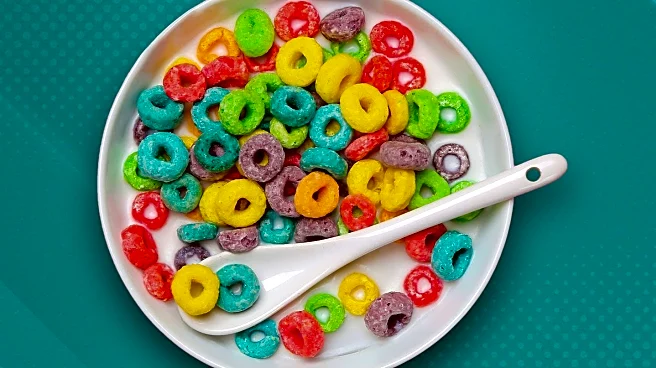What's Happening?
Consumer Reports has highlighted a concerning trend in breakfast cereals marketed to children, noting an increase in sugar, fat, and sodium content over recent years. A study examining cereals launched between 2010 and 2023 found that these products have become less nutritious, with a significant rise in sugar levels. On average, a single serving of cereal contains nearly three teaspoons of sugar, which is about 45% of the daily recommended limit for children by the American Heart Association. Consumer Reports offers guidance on selecting healthier cereals, emphasizing the importance of checking ingredient lists for whole grains and limiting added sugars to less than 6 grams per serving. They also suggest mixing high-sugar cereals with lower-sugar, higher-fiber options to improve nutritional balance.
Why It's Important?
The increasing sugar content in children's breakfast cereals poses a significant health risk, contributing to potential long-term issues such as obesity, diabetes, and heart disease. By providing guidance on healthier cereal choices, Consumer Reports aims to empower consumers to make informed decisions that can improve dietary habits and overall health. This advice is particularly relevant for parents seeking to provide nutritious options for their children, potentially influencing the market demand for healthier cereal products. The emphasis on whole grains and reduced sugar aligns with broader public health initiatives to combat diet-related health issues.












